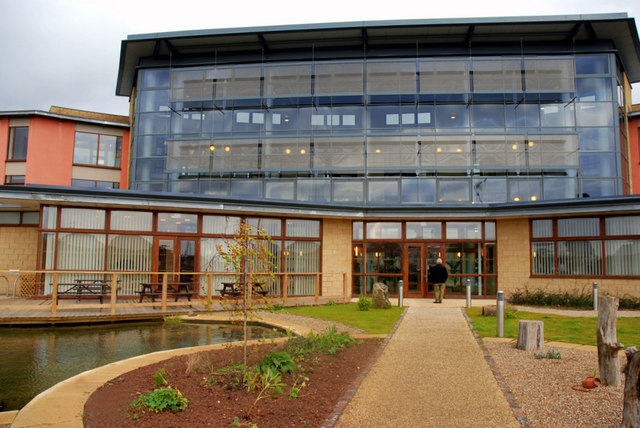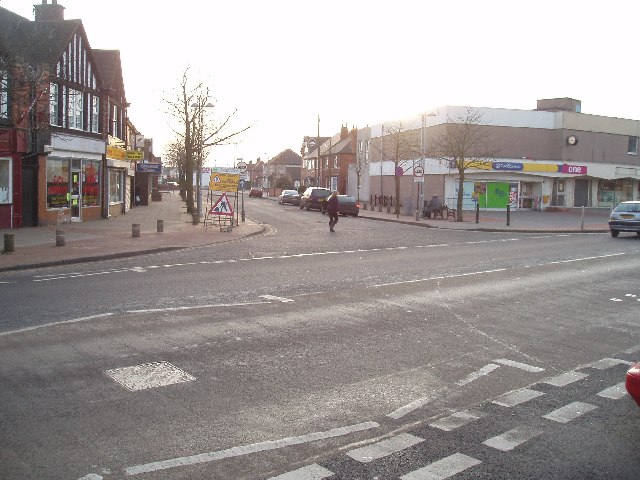New Ollerton on:
[Wikipedia]
[Google]
[Amazon]
 Ollerton and Boughton is a
Ollerton and Boughton is a
 A name first used in the latter part of the nineteenth century to refer to the slowly growing expansion of the village between Ollerton Manor and where the New Plough public house and cemetery lie. New Ollerton was greatly expanded towards the small hamlet of Boughton as Ollerton became a colliery village in the mid-1920s. New Ollerton was once acclaimed in the Spectator magazine as 'an admirable industrial housing scheme' – also known as a '
A name first used in the latter part of the nineteenth century to refer to the slowly growing expansion of the village between Ollerton Manor and where the New Plough public house and cemetery lie. New Ollerton was greatly expanded towards the small hamlet of Boughton as Ollerton became a colliery village in the mid-1920s. New Ollerton was once acclaimed in the Spectator magazine as 'an admirable industrial housing scheme' – also known as a '
 Boughton (pronounced 'Booton') is recorded in the
Boughton (pronounced 'Booton') is recorded in the
 There is a small high street with shops including a post office, chemist, banks and grocery stores. There is also a shopping area on Sherwood Drive which includes charity shops and an indoor market. This is also the home of the Town Hall and Lifespring Centre, a local charitable community venue and cafe.
There are local churches including Lifespring Church, St Paulinus and the Methodist Church which also acts as the local food bank.
There is an Army Cadet Force and a community band.
There is a small high street with shops including a post office, chemist, banks and grocery stores. There is also a shopping area on Sherwood Drive which includes charity shops and an indoor market. This is also the home of the Town Hall and Lifespring Centre, a local charitable community venue and cafe.
There are local churches including Lifespring Church, St Paulinus and the Methodist Church which also acts as the local food bank.
There is an Army Cadet Force and a community band.
Information about the areaOllerton & Boughton Town Council
homepage {{coord, 53.2058, N, 1.0078, W, source:wikidata, display=title Newark and Sherwood Civil parishes in Nottinghamshire
 Ollerton and Boughton is a
Ollerton and Boughton is a civil parish
In England, a civil parish is a type of administrative parish used for local government. It is a territorial designation which is the lowest tier of local government below districts and counties, or their combined form, the unitary authority ...
in the Newark and Sherwood district of Nottinghamshire
Nottinghamshire (; abbreviated Notts.) is a landlocked county in the East Midlands region of England, bordering South Yorkshire to the north-west, Lincolnshire to the east, Leicestershire to the south, and Derbyshire to the west. The traditi ...
, England. The main settlements are the town of Ollerton and the villages of New Ollerton and Boughton. The civil parish was formed in 1996, when the civil parishes of Ollerton and Boughton were merged. The population of the civil parish at the time of the 2011 census was recorded as 9,840.
Ollerton
Ollerton, originally known as Alreton or Allerton, meaning 'farm among the alders', is situated at the crossroads of the York to London, Worksop to Newark, and Lincoln to Mansfield roads. Due to its location, in medieval times Ollerton became a meeting place for forest officials, commissioners and Justices of the Peace, leading to the development of its two coaching inns, The White Hart and The Hop Pole. For many years, the main occupation in Ollerton washop
A hop is a type of jump.
Hop or hops may also refer to:
Arts and entertainment
* ''Hop'' (film), a 2011 film
* Hop! Channel, an Israeli TV channel
* ''House of Payne'', or ''HOP'', an American sitcom
* Lindy Hop, a swing dance of the 1920s and ...
growing – there were hop fields along the River Maun
The River Maun is a river in Nottinghamshire, England. Its source lies in Kirkby-in-Ashfield, and from there it flows north east through Mansfield (which takes its name from the river), Edwinstowe and Ollerton, these being the heart of the Sher ...
from as early as 1691 and a weekly hop market was held in the town on Fridays.
The Markhams, a land owning family, were highly influential in the town's development. They built and lived in Ollerton Hall and the story of their life during the Civil War is immortalised in a book by Elizabeth Glaister.
Throughout the centuries, watermill
A watermill or water mill is a mill that uses hydropower. It is a structure that uses a water wheel or water turbine to drive a mechanical process such as milling (grinding), rolling, or hammering. Such processes are needed in the production of ...
s have played an important part of life in Ollerton; today the only working watermill in Nottinghamshire can be found in the village, built in 1713 on the same spot as one of those listed in the Domesday Book.
New Ollerton
 A name first used in the latter part of the nineteenth century to refer to the slowly growing expansion of the village between Ollerton Manor and where the New Plough public house and cemetery lie. New Ollerton was greatly expanded towards the small hamlet of Boughton as Ollerton became a colliery village in the mid-1920s. New Ollerton was once acclaimed in the Spectator magazine as 'an admirable industrial housing scheme' – also known as a '
A name first used in the latter part of the nineteenth century to refer to the slowly growing expansion of the village between Ollerton Manor and where the New Plough public house and cemetery lie. New Ollerton was greatly expanded towards the small hamlet of Boughton as Ollerton became a colliery village in the mid-1920s. New Ollerton was once acclaimed in the Spectator magazine as 'an admirable industrial housing scheme' – also known as a 'model village
A model village is a type of mostly self-contained community, built from the late 18th century onwards by landowners and business magnates to house their workers. Although the villages are located close to the workplace, they are generally phys ...
'. Miners enjoyed a high standard of living, with semi-detached houses, large gardens and hot water supplied directly from Ollerton Colliery.
Times have changed since the mine closed in 1994 with 'The Sherwood Energy Village' created on the former pit site. Despite receiving media attention for its environmental principles, the Energy Village has been regarded for most of its life as a white elephant going into receivership several times. The scheme of redeveloping the old pit site has had little impacting value and purpose for much of the population of the town.
Boughton
 Boughton (pronounced 'Booton') is recorded in the
Boughton (pronounced 'Booton') is recorded in the Domesday Book
Domesday Book () – the Middle English spelling of "Doomsday Book" – is a manuscript record of the "Great Survey" of much of England and parts of Wales completed in 1086 by order of King William I, known as William the Conqueror. The manusc ...
and has had a varied history: it has played host to Viking invaders and Italian and German prisoners of war, and at one stage formed part of the vast Rufford Estate.
Originally a small hamlet centred on St Matthew's Church, farming was the main occupation until the 1930s, when the face of Boughton began to change dramatically. The sinking of Ollerton Colliery and the housing stock that followed means that today the boundary between New Ollerton and Boughton can be difficult to recognise. A noted architectural feature of the area is the listed Edwardian Boughton Pumping Station
Boughton Pumping Station was a water pumping station near New Ollerton in Nottinghamshire, operating from 1905. After closure it became a commercial hospitality venue.
History
Situated on the edge of Sherwood Forest, Boughton Pumping Station ...
, which formerly supplied over three million gallons of clean water each day to homes in the city of Nottingham.
History and amenities
 There is a small high street with shops including a post office, chemist, banks and grocery stores. There is also a shopping area on Sherwood Drive which includes charity shops and an indoor market. This is also the home of the Town Hall and Lifespring Centre, a local charitable community venue and cafe.
There are local churches including Lifespring Church, St Paulinus and the Methodist Church which also acts as the local food bank.
There is an Army Cadet Force and a community band.
There is a small high street with shops including a post office, chemist, banks and grocery stores. There is also a shopping area on Sherwood Drive which includes charity shops and an indoor market. This is also the home of the Town Hall and Lifespring Centre, a local charitable community venue and cafe.
There are local churches including Lifespring Church, St Paulinus and the Methodist Church which also acts as the local food bank.
There is an Army Cadet Force and a community band.
See also
* WalesbyReferences
External links
Information about the area
homepage {{coord, 53.2058, N, 1.0078, W, source:wikidata, display=title Newark and Sherwood Civil parishes in Nottinghamshire